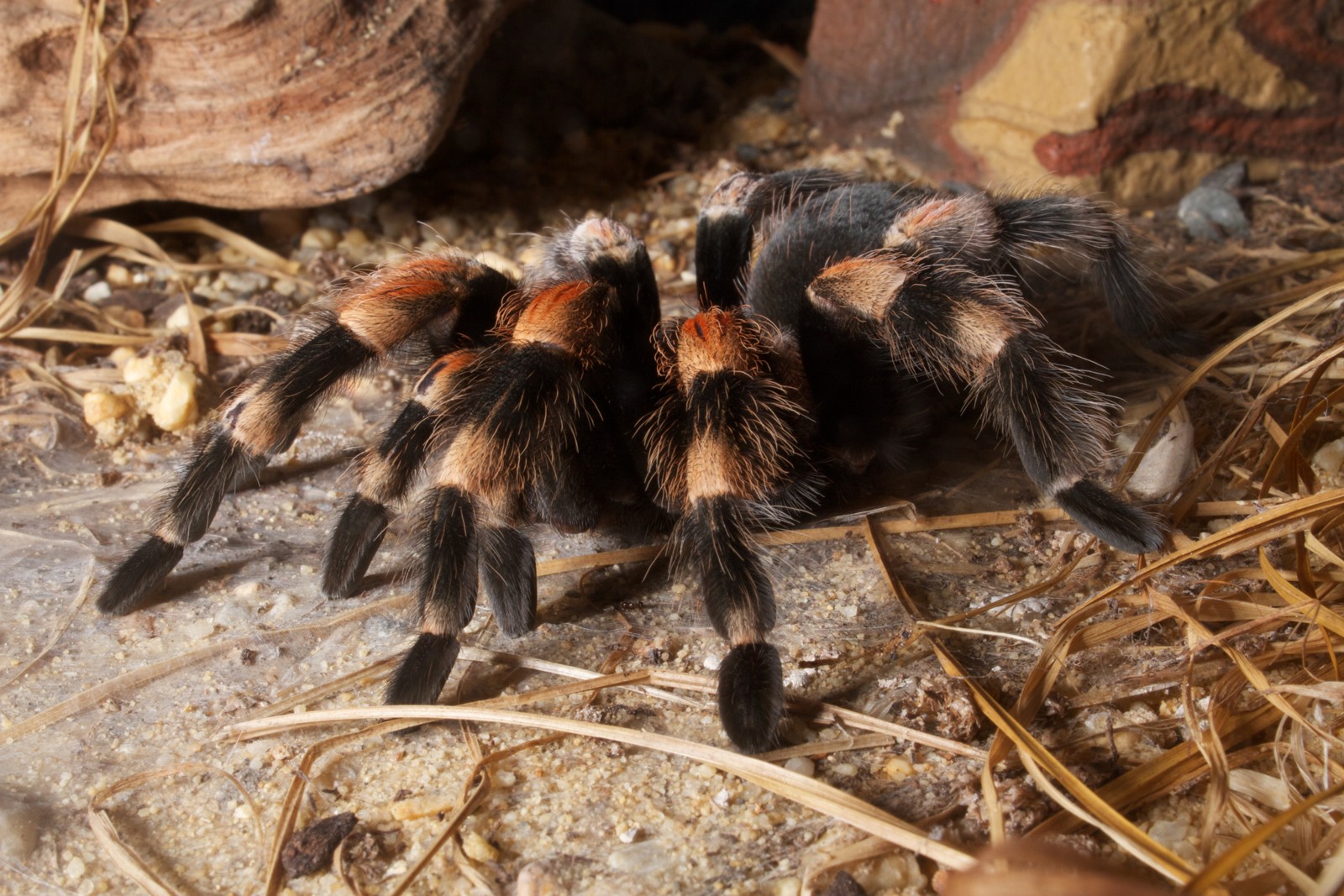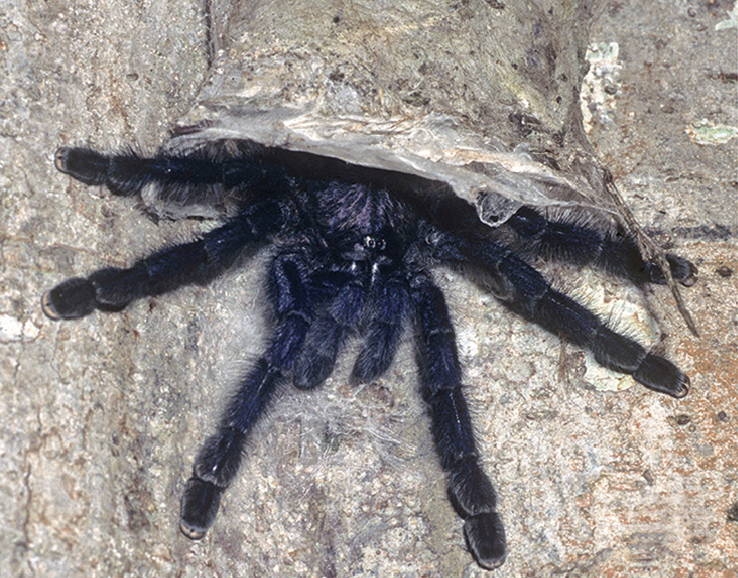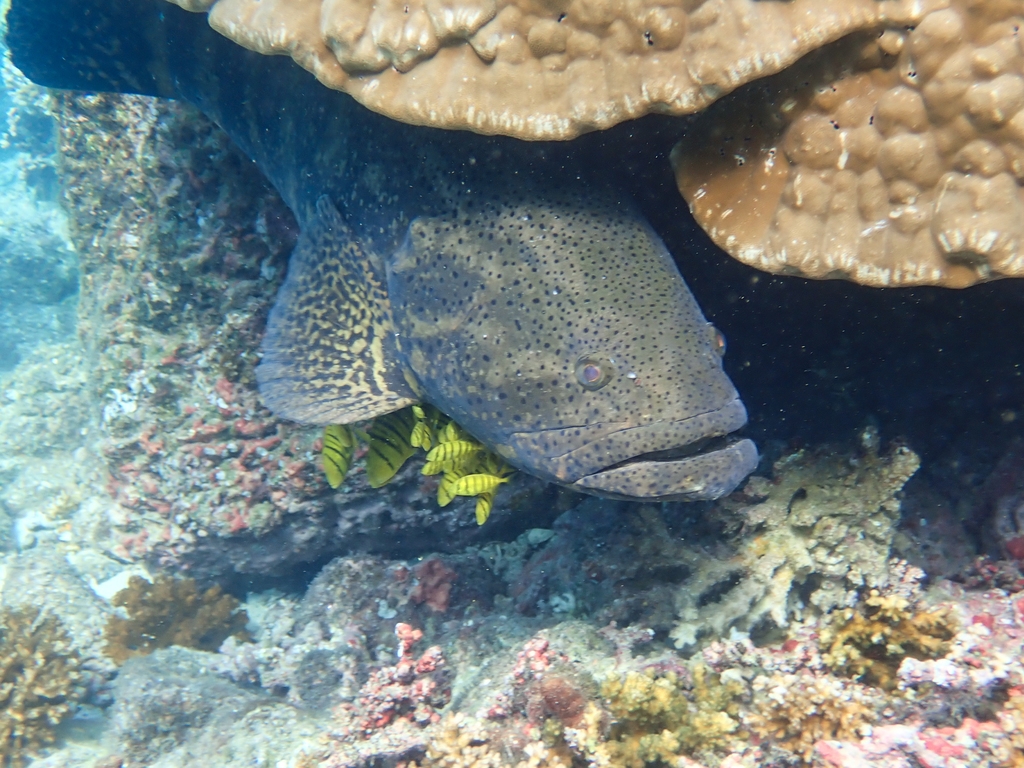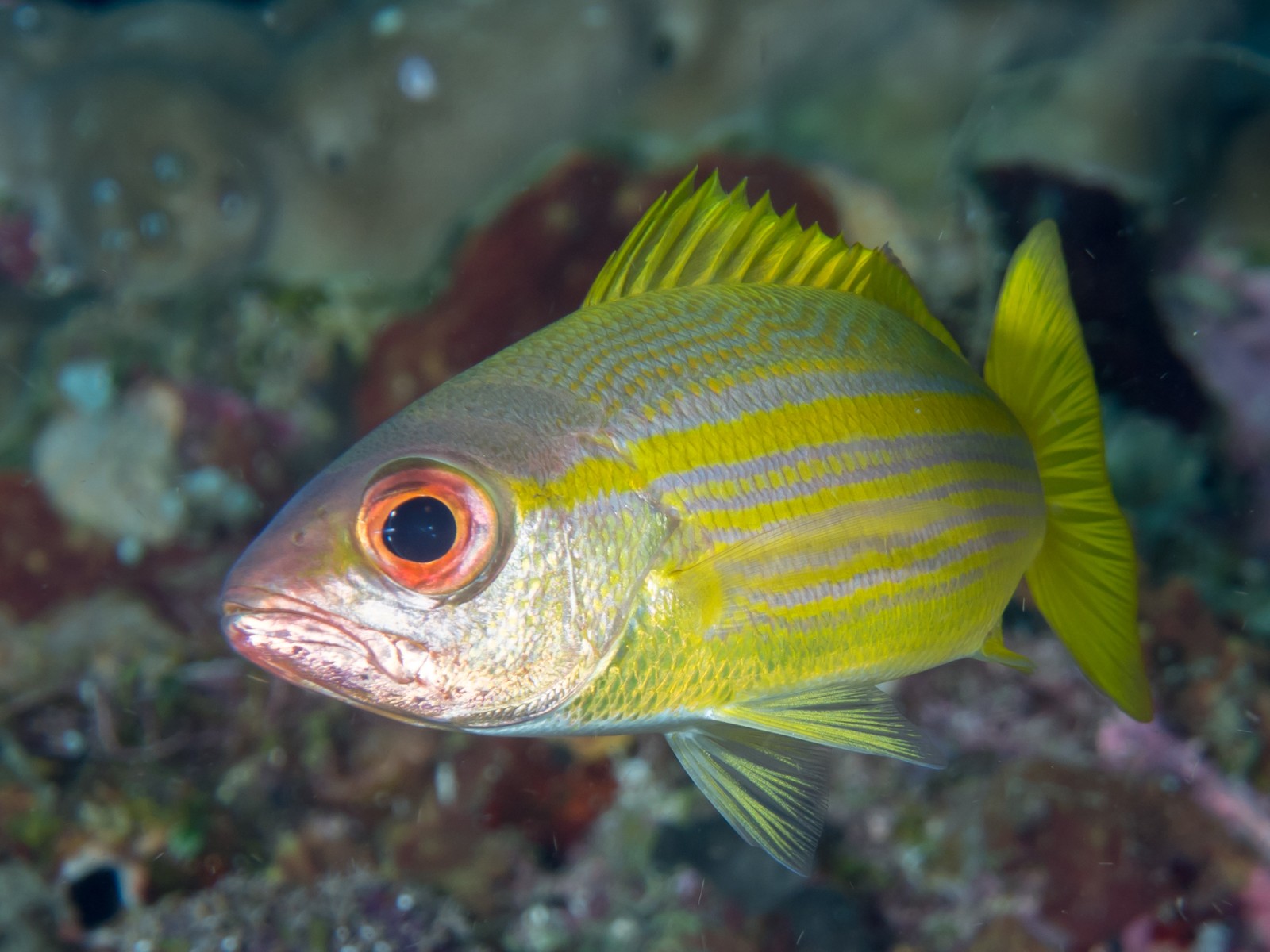Mexican Red Knee vs Pink Toe Tarantula: A Complete Comparison
When comparing the Mexican Red Knee vs Pink Toe Tarantula, you’ll find two distinctly different species with unique characteristics that make them popular in the arachnid hobby. The Mexican Red Knee (Brachypelma hamorii) is a terrestrial species reaching 5-6 inches (12-15 cm) in leg span, while the Pink Toe Tarantula (Avicularia avicularia) is an arboreal species typically measuring 4-5 inches (10-13 cm).
These fascinating arachnids differ significantly in their habitat preferences, care requirements, and temperament. The Mexican Red Knee is known for its docile nature and striking orange-red knee bands, making it a preferred choice for beginners. In contrast, the Pink Toe Tarantula, with its distinctive pink-tipped feet and arboreal lifestyle, offers a more dynamic display of climbing behaviors.

© Brian Gratwicke from DC, USA / CC BY 2.0
The Mexican Red Knee Tarantula showcases its iconic coloration with striking reddish-orange bands contrasting against a dark body. This terrestrial species is renowned for its calm demeanor and impressive longevity, with females capable of living up to 30 years in captivity.

© original: to be completed processed: P. Coxhead / CC BY 3.0
The Pink Toe Tarantula exhibits its characteristic dark coloration and robust build. This arboreal species is known for its agility and unique climbing abilities, making it a fascinating display specimen in properly configured vertical terrariums.
Key Differences: Mexican Red Knee vs Pink Toe Tarantula
| Feature | Mexican Red Knee | Pink Toe Tarantula |
|---|---|---|
| Size | 5-6 inches (12-15 cm) | 4-5 inches (10-13 cm) |
| Lifespan | Females: 25-30 years, Males: 5-10 years | Females: 10-12 years, Males: 3-4 years |
| Habitat Type | Terrestrial, ground-dwelling | Arboreal, tree-dwelling |
| Temperament | Very docile, calm | Gentle but skittish |
| Care Level | Beginner-friendly | Intermediate |
| Growth Rate | Slow | Moderate to fast |
Habitat Requirements and Care
The Mexican Red Knee Tarantula thrives in terrestrial setups with a minimum of 3-4 inches (7.6-10.2 cm) of substrate for burrowing. They require temperatures between 75-80°F (24-27°C) and moderate humidity levels of 65-70%. Their enclosure should be wider than tall, measuring at least 12x12x12 inches (30x30x30 cm).
Pink Toe Tarantulas need vertical space for climbing, with enclosures measuring at least 12x12x18 inches (30x30x45 cm). They prefer higher humidity levels of 75-85% and similar temperatures to Mexican Red Knees. Cork bark, branches, and artificial plants are essential for creating climbing opportunities.
Feeding and Diet Differences
Both species are opportunistic predators, but their hunting strategies differ:
-
Mexican Red Knee
- Feeds primarily on ground-dwelling prey
- Slower metabolism requiring feeding every 7-10 days
- Accepts crickets, roaches, and occasional small mice
-
Pink Toe Tarantula
- Catches both flying and crawling prey
- Faster metabolism requiring feeding every 5-7 days
- Prefers flying insects but accepts standard feeder insects
Behavioral Characteristics
Mexican Red Knee Behavior
- Spends most time in open view
- Rarely kicks urticating hairs
- Moves deliberately and slowly
- Excellent for handling sessions
Pink Toe Behavior
- More reclusive, often hiding in foliage
- May display sudden bursts of speed
- Can jump short distances
- Requires more careful handling
Which Makes a Better Pet?
For beginners, the Mexican Red Knee Tarantula is often the better choice due to its:
- Exceptionally calm temperament
- Hardiness and forgiveness of minor care mistakes
- Longer lifespan
- Visible lifestyle making monitoring easier
The Pink Toe Tarantula suits keepers who:
- Have some experience with arachnids
- Enjoy creating naturalistic vertical habitats
- Prefer watching dynamic climbing behaviors
- Can maintain higher humidity levels consistently
Both species make fascinating pets, but their different care requirements and behavioral traits should guide your choice based on experience level and maintenance capabilities.









